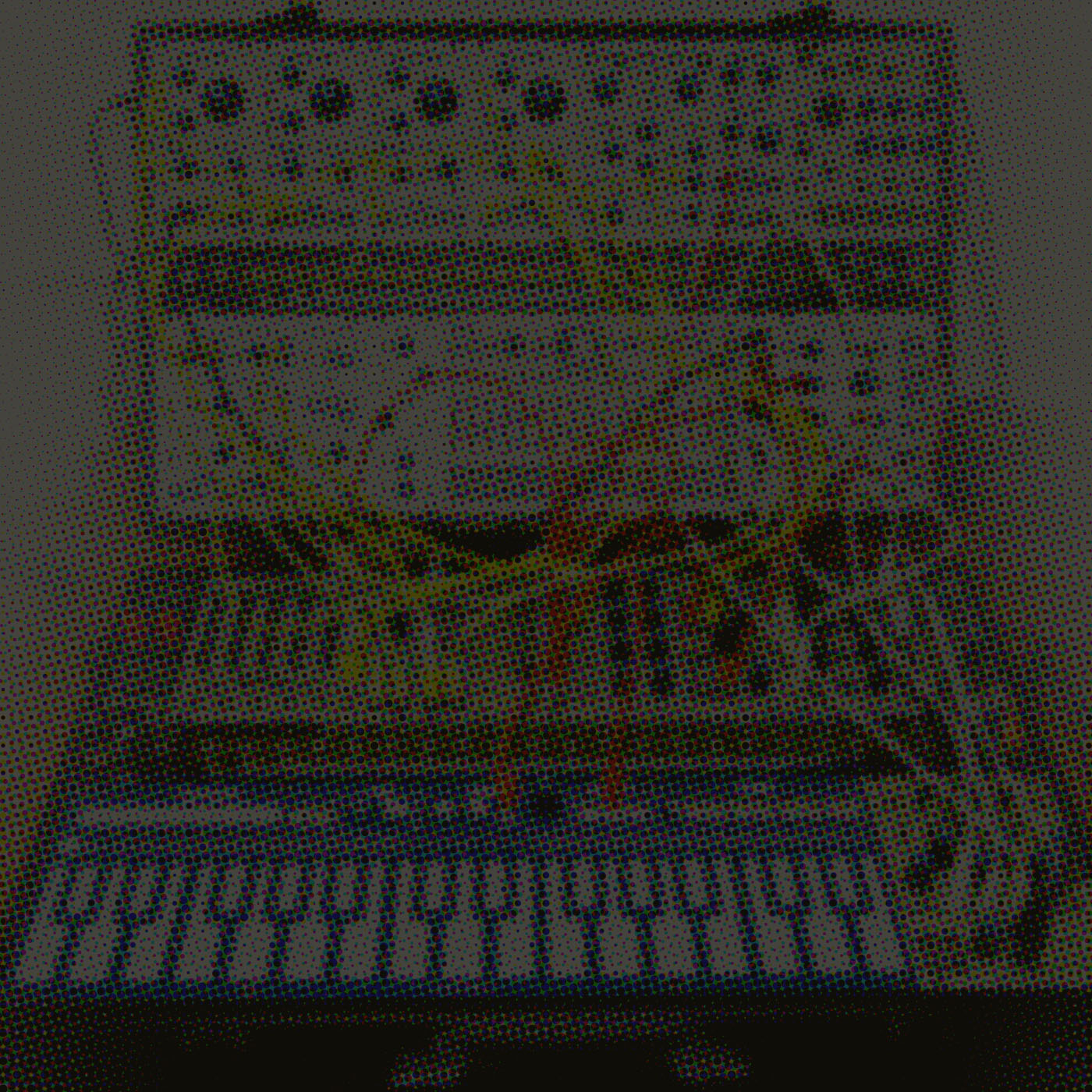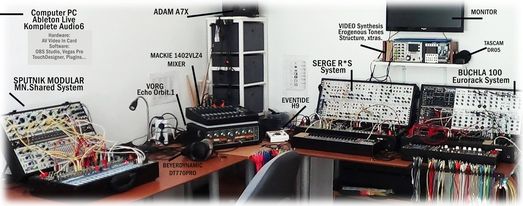
With an education dedicated to fine arts (painting, sculpture, engraving, photography, installations…), Rafael Timoner had his first exhibition in 1985. Three years later, after winning the most important local art awards he moved to Mallorca, starting to work professionally and being represented by different Art Galleries, showing his works regularly in solo and group exhibitions in different cities, also participating in numerous International Art Fairs around the world. He has different sculptures in public spaces, and his art works are shown in numerous public and private collections in Spain, Europe and the U.S.
His body of work has always been characterized by a minimal and conceptual style, in constant experimentation, and the concern to always incorporate new techniques has been the motivation which led him to explore the audio-visual sphere.
The concepts of “space and time” have been the main source of inspiration throughout his career, having spent years to study anything related to it. When it comes to painting or sculpture these concepts can only be depicted visually, whereas with video (in motion) and sound, space and time acquire a more physical and real presence, becoming the center of the action. After a period of learning and selecting the tools to develop his creative processes, he has focused on exploring modular synthesis techniques, having built different Eurorack systems for this purpose (Sputnik Modular, Serge R*S and Euro Buchla 100).
In his case, the use of sound (and video) is not subject to any law or musical theory, its use is purely conceptual. Although he has a basic knowledge of music theory and composition (and continues to study it), he’d rather think of musical pigments, tones, textures in paint, or welds, oxides and brilliance of sculptural metals… Mutating into frequencies, tones, tonalities, rhythms, times… and thus becoming part of his new “palette”.
The last 18 months have been tremendously intense, starting his production coinciding with the beginning of the pandemic and the first lockdown. In that period of time he has collaborated with artists and with the record label “The Orchestra of the Society Degradation” from Russia (with 6 tracks on 3 different VVAA albums published), he has participated in the compilation of “Serge-O- Voxes IV”, has released 4 EP A/V albums, 1 A/V LP album for the netlabel “The Church of Noisy Goat”, and finally, the current and latest project, more purely audio-visual, “In_Somnia” for us.
What have you been working on lately, and do you have any upcoming releases or performances?
During the last seven months I have been working on your session: the Audiovisual project “In_Somnia ».
In parallel, I have been offered to release an experimental album consisting of some tracks I made throughout the year.
How were you first acquainted to Modular Synthesis? When did that happen and what did you think of it at the time?
My begin was with a DAW, plugins and virtual Synths, about 8 years ago. From FL Studio to Ableton Live, then gradually to semi-modulars. The first one an Arturia Minibrut followed by a Moog Mother32 and a D-FAM… I added a Rackbrut, and that’s how I initiated my first modular system: and the party started too!
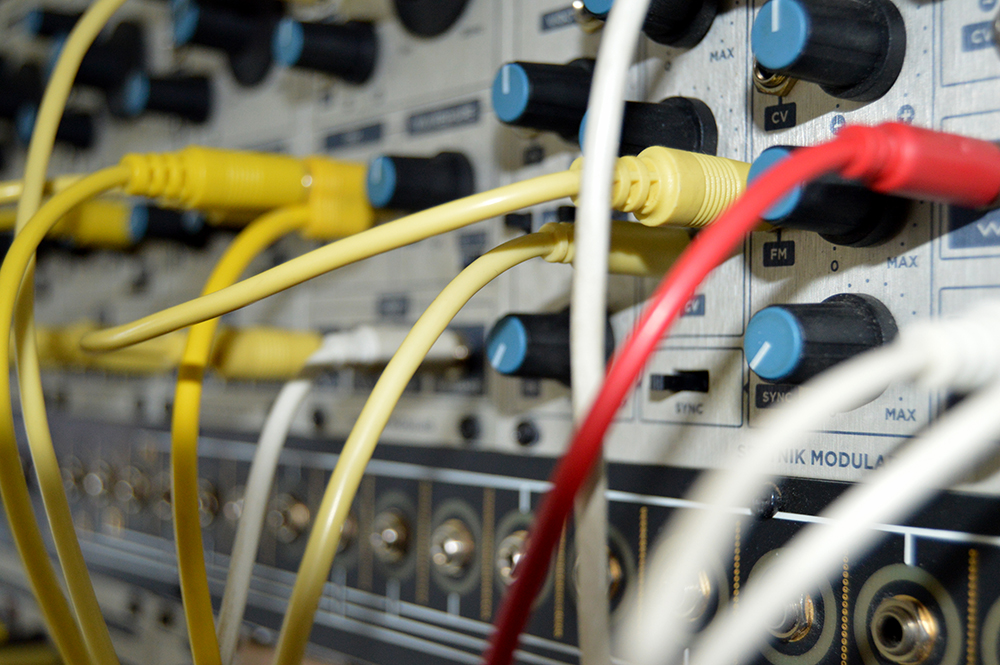
When did you buy your first system?
I started the first system with that rackbrut about 5 years ago, using together with Minibrut, and Moog semi-modulars. In a short time I sold everything except the modules that I had collected, and I began to build my system around two Doepfer large cases, a 9U and a 6U base. From there I went to 4 and even had 6 monster cases. A 168hp / 14U monster of a system, that was insane!
What was your first module or system?
I remember perfectly my first module. I had bought it in Vienna, at RawVoltage, a store that I visited frequently, attracted by its modular showroom. I asked for a simple, basic module, to start and learn, it was a Doepfer Standard VCO and I installed it in the 84hp of my first 3U rackbrut. And from there everything was fast.
How long did it take for you to become accustomed to patching your own synthesizer together out of its component parts?
I was dedicated to studying, learning and practicing for more than three years, on the fourth year I dared to produce my first Audio-Visual work.
What was the effect of that discovery on your compositional process? On your existence?
Well, the composition process is not a new discovery for me, my training is in the field of Fine Arts, with a professional history of more than 30 years, so it is a process to which I am accustomed and even trained.
Not being a musician, my interest in sound is totally experimental, although I have a basic understanding of music theory, it’s not exactly what I’m really interested in. As for my existence, my daily life has always been dedicated to art, and yes, it has a powerful effect since it is, in reality, a vocation that implies a way of living, a lifestyle for its better and worse. A constant, enriching learning, and that is the engine that drives me, sometimes uncertain and undiscovered, but of course, incredibly exciting.
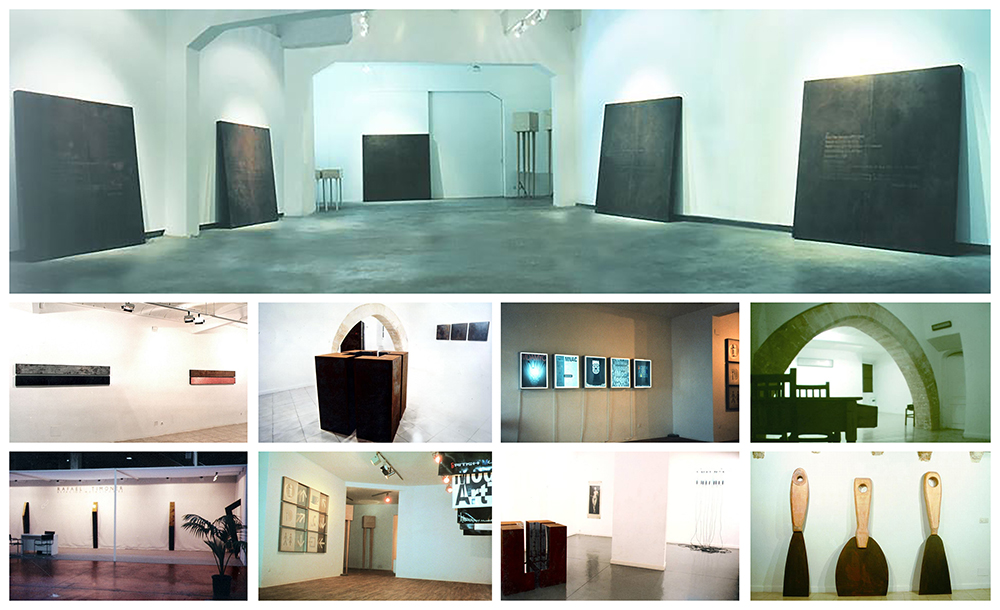
You graduated in Fine Arts and chose to work multimedia, associating images to music, can you explain why?
Possibly I already answered that in the previous question, saying that I come from the visual arts, with a long professional experience of more than 30 years in different techniques such as Painting, Sculpture, Photography, Installations and Video Art. My first exhibition was held in 1985, and since then I have been exhibiting regularly in Art Galleries and participating in numerous solo and group exhibitions, as well in International Art Fairs, with a minimal and conceptual style, experimental, and in constant evolution.
One of my first works was a series of paintings under the concept and title “Space-Time”, later I made other series titled “Metallic Spaces I and II”. Little by little I started to incorporate and play with volume and my art works became sculptures. One of my first sculptural projects was a series called “Audio-Sculptures”, which I still have at home and, for different reasons, I have never exhibited. Later on I developped other series of sculptures and installations, highlighting a great simultaneous exhibition in three different galleries in Palma de Mallorca (Spain), under the title “Tres Estancias”. Later I made some conceptual pieces for a traveling exhibition, installation of sculpture with sound, which was exhibited first at the “Instituto Cervantes” in Vienna (2011), and later at the “Gabarron Foundation” in New York (2011). The piece showed in these two exhibitions was a sculpture of stainless steel metal plate. with texts engraved, and a sound system reproducing voices from “art auctions”.
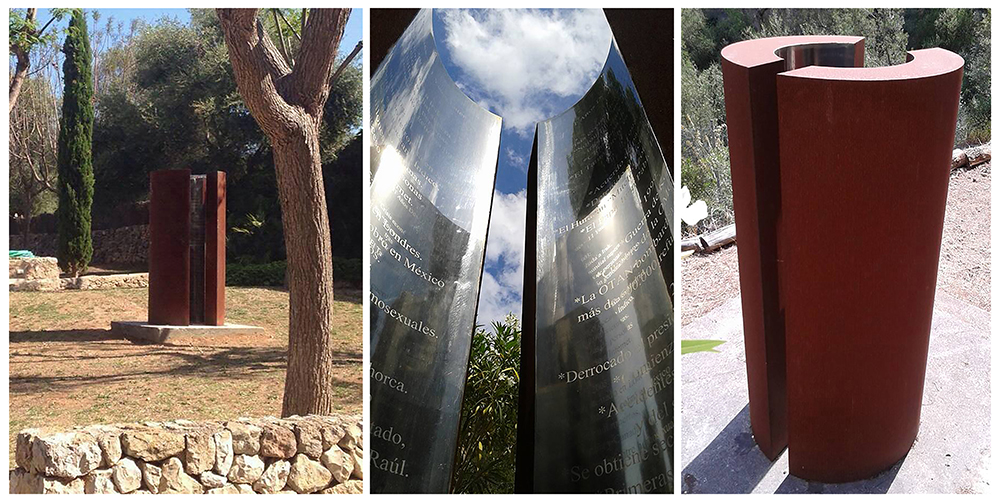
Quite often modularists are in need for more, their hunger for new modules is never satisfied? How do you explain that?
I explain it as a natural process, typical of the human being, never satisfied, a consequence of the consumer society in which we are immersed. Top brands keep releasing new modules all the time, and one can feel that intense fever to own and desire every new offer, but… Do you really need it ?, that’s the question.
I suffered and overcame that virus!
I started small and ended up with 6 monster cases, more than 1,000 hp, with more than 200 modules and my head about to explode. Too much information to retain and little time to enjoy. That was the turning point, and my immunity. I decided to reduce to a necessary minimum, first removing and selling all the digital modules, others with factory presets, then all the most popular brands, each with such strong character that they can be recognized from many miles away.
Ultimately, I decided that a couple of brands and a few modules can be more efficient than a whole 3-meter wall.
From there, I had to select, and currently I am very satisfied with my three surviving systems: Sputnik Modular, Serge R * S and Buchla 100, all of them in Eurorack version.
Instrument building may actually be quite compositional, defining your sonic palette, each new module enriching your vocabulary. Would you say that their choice and the way you build your systems can be an integral part of your compositional process? Or is this the other way round and you go after a new module because you want to be able to sound-design some of your ideas?
I have tried to build a system whose modules are adapted to my needs, and which is comfortable to play… Avoiding complications: hidden menus, combinations of buttons and other ingenious proposals.
Do you prefer single-maker systems (for example, Buchla, Make Noise, Erica Synths, Roland, etc) or making your own modular synthesizer out of individual components form whatever manufacturer that match your needs.
In my opinion, the best is single-makers systems, although there are others that may be necessary and useful that can be seamlessly integrated and expanding the possibilities.
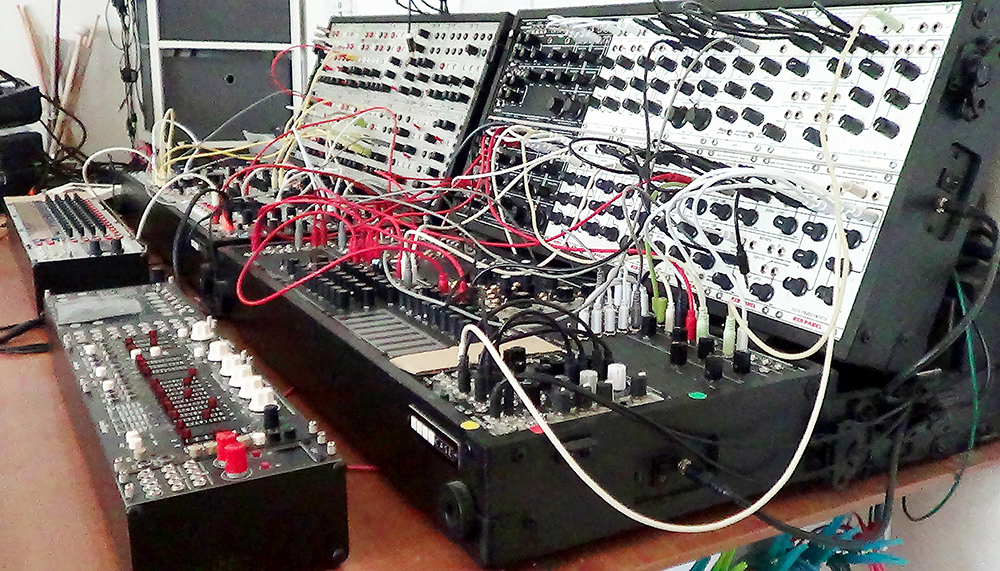
How has your system been evolving?
It has been a long process, since I started without prior knowledge and had to discover and learn from a market full of brands and modules that, at first, is quite overwhelming. But clearly, my evolution has gone from 0 to infinity, and finally from more to less: 3 brands, 3 independent systems and a few of extra modules, only the really necessary, more time to go deeper with a fewer headaches.
Do you tend to use pure modular systems, or do you bring in outside effect and devices when playing or recording?
I am more interested in pure modular systems, mainly analog, using the minimum of external effects and devices. Currently I only have two external devices, one modern and one vintage: Vorg Echo Orbit-1 and Eventide H9. I prefer to use modules: as Dual Reverberator from Tokyo Tape Music Center (Buchla clone), uDervish, uClouds and other little modules like Happy Nerding FxAid and Eryka pico DSP, that’s all on my system.
Would you please describe the system you used to create the music for us?
For the “In_Somnia” project I have only used a “Sputnik Modular” system, all the modules are from the brand except two: ErbeVerb and EchoPhon both from Make Noise, and as a quantaizer with other modulation possibilities a micro O_c.
For video synthesis I have used an Erogenous Tones module, “Structure” and the OBS software with some plugins, and a video camera.
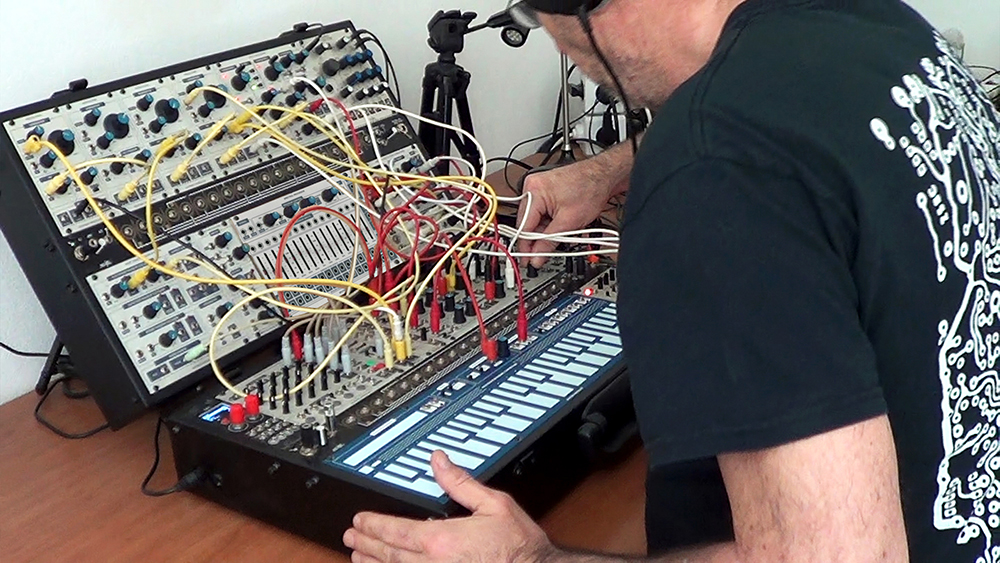
What do you think that can only be achieved by modular synthesis that other forms of electronic music cannot or makes harder to do?
More than the system you use, I think it is more the way you do it. And the modular synthesis allows you to do what is normalized , but also transgress the established with crazy and impossible patches that open infinite possibilities.
What would be the system you are dreaming of?
Easy, with only 6 letters: B U C H L A
Are you feeling close to some other contemporary Modularists?
Which ones?
I can feel closer to some while there are many others whose work I am very interested in because their music stimulates and inspires me, even if they are operating in distant styles. I have in mind Morton Subotnick, of course, as well as Doug Lynner, Suzanne Ciani, Laurie Anderson, John Cage… Among the younger ones, for example, Bana Haffar, Alina Kalancea, Pat Moonchy, Philippe Petit, Boddika, Francisco Meirino, PRFRK, Julien Palomo, Michael White… And of course, because of our friendship, proximity and constant dialogue, I should emphasize that Christer Déman is a big reference for me.
Which pioneers in Modularism influenced you and why?
At present, I consider myself in a learning phase, a long road that may never end because it is constant. I try to learn from the pioneers, the greatest, the best, whom I have already mentioned in the previous question.
Any advice you could share for those willing to start or develop their “Modulisme”?
Basically define what you want to do, what can suit you best, and bear in mind that you can do a lot of different things with a few modules, you don’t need a monster of a system.
